E-cadherin inhibits cell surface localization of the pro-migratory 5T4 oncofetal antigen in mouse embryonic stem cells
- PMID: 17507657
- PMCID: PMC1949355
- DOI: 10.1091/mbc.e06-09-0875
E-cadherin inhibits cell surface localization of the pro-migratory 5T4 oncofetal antigen in mouse embryonic stem cells
Abstract
Epithelial-mesenchymal transition (EMT) events occur during embryonic development and are important for the metastatic spread of epithelial tumors. We show here that spontaneous differentiation of mouse embryonic stem (ES) cells is associated with an E- to N-cadherin switch, up-regulation of E-cadherin repressor molecules (Snail and Slug proteins), gelatinase activity (matrix metalloproteinase [MMP]-2 and -9), and increased cellular motility, all characteristic EMT events. The 5T4 oncofetal antigen, previously shown to be associated with very early ES cell differentiation and altered motility, is also a part of this coordinated process. E- and N-cadherin and 5T4 proteins are independently regulated during ES cell differentiation and are not required for induction of EMT-associated transcripts and proteins, as judged from the study of the respective knockout ES cells. Further, abrogation of E-cadherin-mediated cell-cell contact in undifferentiated ES cells using neutralizing antibody results in a reversible mesenchymal phenotype and actin cytoskeleton rearrangement that is concomitant with translocation of the 5T4 antigen from the cytoplasm to the cell surface in an energy-dependent manner. E-cadherin null ES cells are constitutively cell surface 5T4 positive, and although forced expression of E-cadherin cDNA in these cells is sufficient to restore cell-cell contact, cell surface expression of 5T4 antigen is unchanged. 5T4 and N-cadherin knockout ES cells exhibit significantly decreased motility during EMT, demonstrating a functional role for these proteins in this process. We conclude that E-cadherin protein stabilizes cortical actin cytoskeletal arrangement in ES cells, and this can prevent cell surface localization of the promigratory 5T4 antigen.
Figures
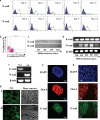
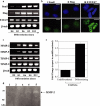
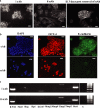
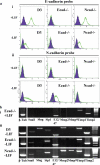

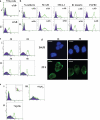
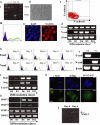
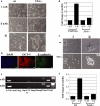
References
-
- Barrallo-Gimeno A., Nieto M. A. The Snail genes as inducers of cell movement and survival: implications in development and cancer. Development. 2005;132:3151–3161. - PubMed
-
- Barrow K. M., Perez-Campo F., Ward C. M. Use of the cytomegalovirus promoter for transient and stable transgene expression in mouse embryonic stem cells. Methods Mol. Biol. 2006;329:283–294. - PubMed
-
- Barrow K. M., Ward C. M., Rutter J., Ali S., Stern P. L. Embryonic expression of murine 5T4 oncofoetal antigen is associated with morphogenetic events at implantation and in developing epithelia. Dev. Dynam. 2005;233:1535–1545. - PubMed
-
- Bates R. C., Mercurio A. M. The epithelial-mesenchymal transition (EMT) and colorectal cancer progression. Cancer Biol. Ther. 2005;4:365–370. - PubMed
-
- Behr R., Heneweer C., Viebahn C., Denker H. W., Thie M. Epithelial-mesenchymal transition in colonies of rhesus monkey embryonic stem cells: a model for processes involved in gastrulation. Stem Cells. 2005;23:805–816. - PubMed
Publication types
MeSH terms
Substances
LinkOut - more resources
Full Text Sources
Other Literature Sources
Molecular Biology Databases
Research Materials

